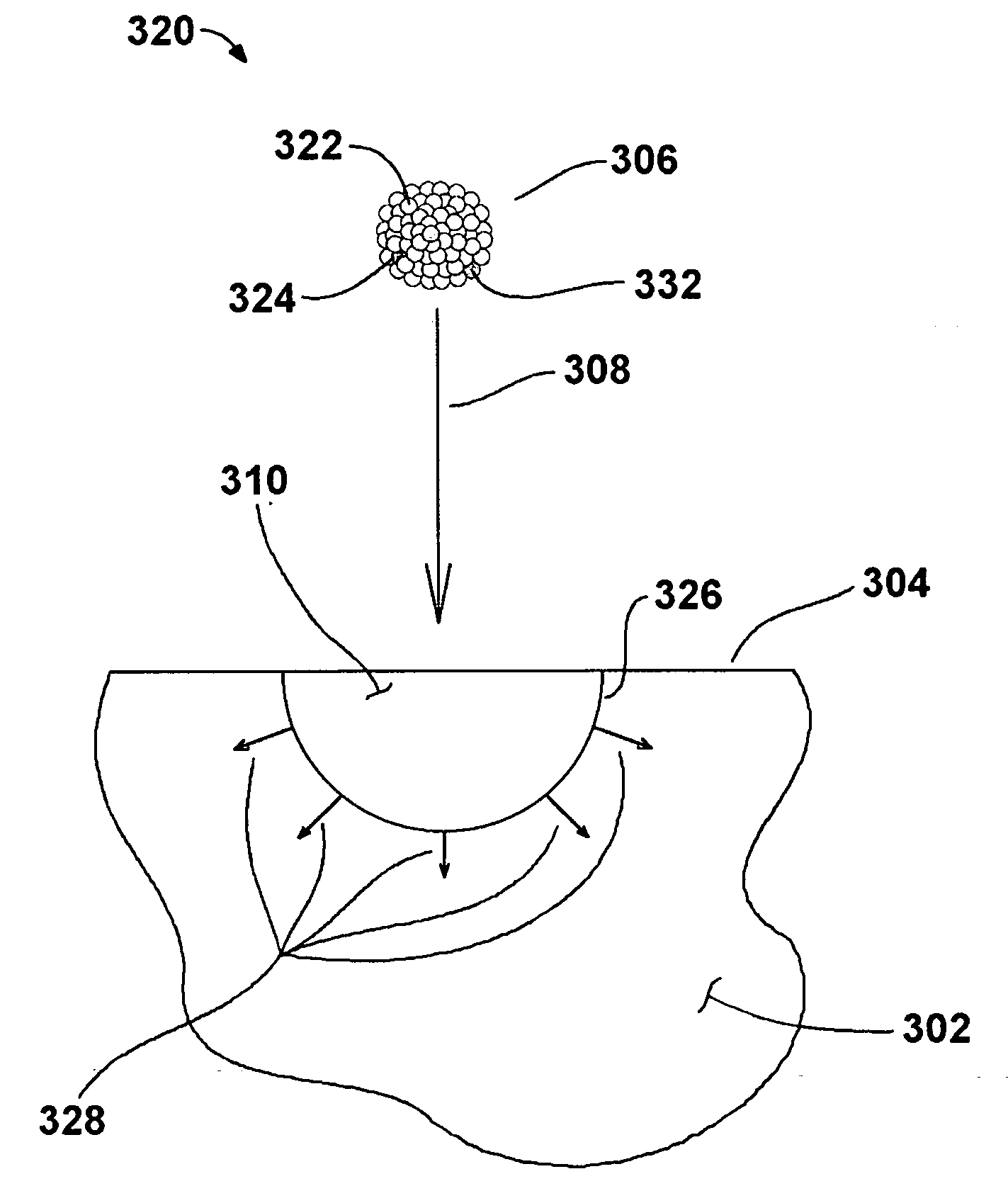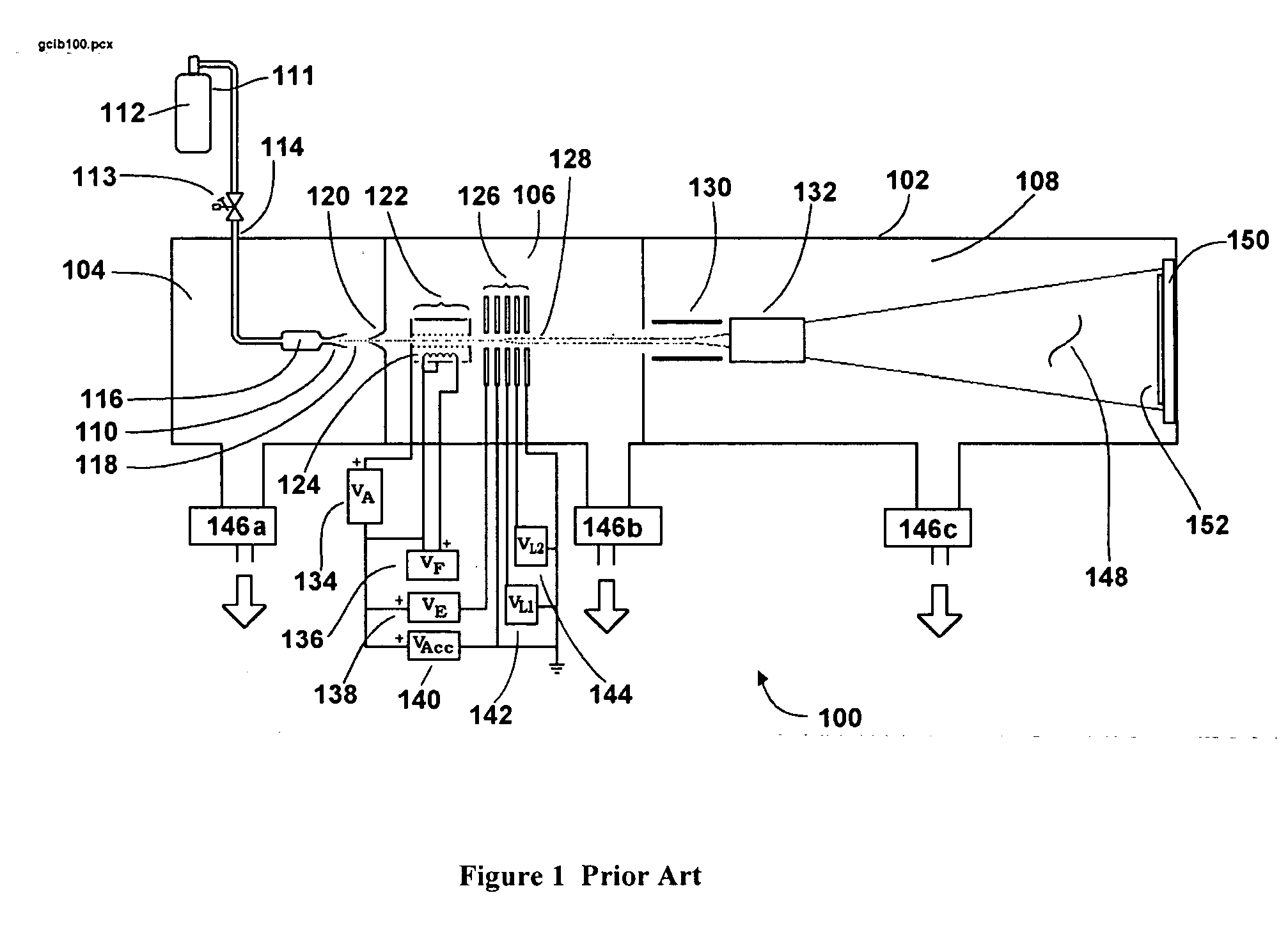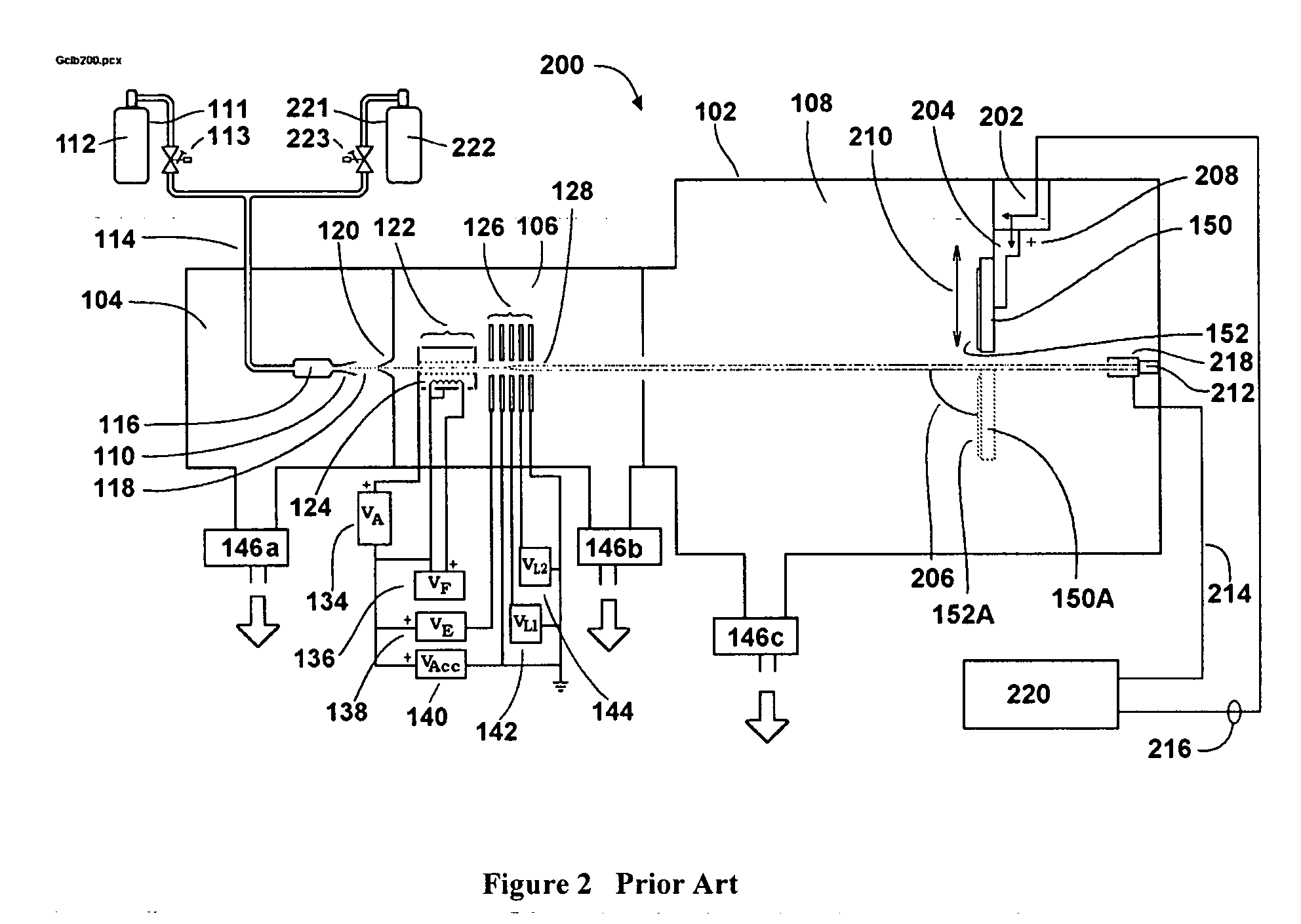Formation of doped regions and/or ultra-shallow junctions in semiconductor materials by gas-cluster ion irradiation
a technology of gas-cluster ion irradiation and semiconductor materials, which is applied in the direction of vacuum evaporation coatings, electric discharge tubes, coatings, etc., can solve the problems of undetected deep junctions, low processing throughput, and difficult formation of shallowly doped semiconductors with abrupt interfaces, so as to increase the solid solubility of boron and achieve the effect of high boron doping levels and high efficiency
- Summary
- Abstract
- Description
- Claims
- Application Information
AI Technical Summary
Benefits of technology
Problems solved by technology
Method used
Image
Examples
Embodiment Construction
[0041]FIG. 1 shows a schematic of the basic elements of a prior art configuration for a processing apparatus 100 for generating a GCIB in accordance with the present invention. Apparatus 100 may be described as follows: a vacuum (reduced-pressure) vessel 102 is divided into three communicating chambers, a source chamber 104, an ionization / acceleration chamber 106, and a processing chamber 108. The three chambers are evacuated to suitable operating pressures by vacuum pumping systems 146a, 146b, and 146c, respectively. A condensable source gas 112 (for example argon or N2) stored in a gas storage cylinder 111 is admitted under pressure through gas metering valve 113 and gas feed tube 114 into stagnation chamber 116 and is ejected into the substantially lower pressure vacuum through a properly shaped nozzle 110. A supersonic gas jet 118 results. Cooling, which results from the expansion in the jet, causes a portion of the gas jet 118 to condense into clusters, each consisting of from ...
PUM
| Property | Measurement | Unit |
|---|---|---|
| depth | aaaaa | aaaaa |
| mean energy | aaaaa | aaaaa |
| angle of | aaaaa | aaaaa |
Abstract
Description
Claims
Application Information
 Login to View More
Login to View More - R&D
- Intellectual Property
- Life Sciences
- Materials
- Tech Scout
- Unparalleled Data Quality
- Higher Quality Content
- 60% Fewer Hallucinations
Browse by: Latest US Patents, China's latest patents, Technical Efficacy Thesaurus, Application Domain, Technology Topic, Popular Technical Reports.
© 2025 PatSnap. All rights reserved.Legal|Privacy policy|Modern Slavery Act Transparency Statement|Sitemap|About US| Contact US: help@patsnap.com



